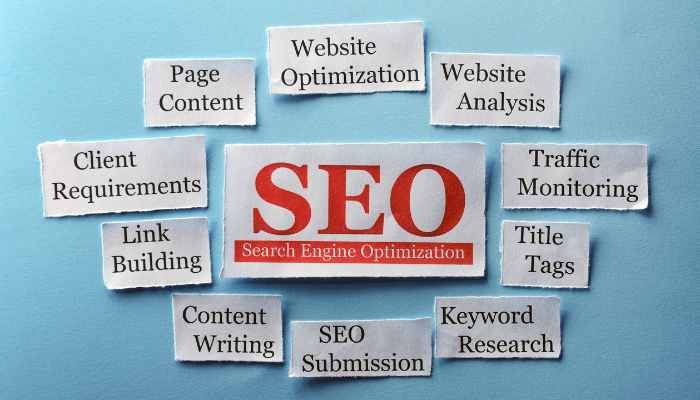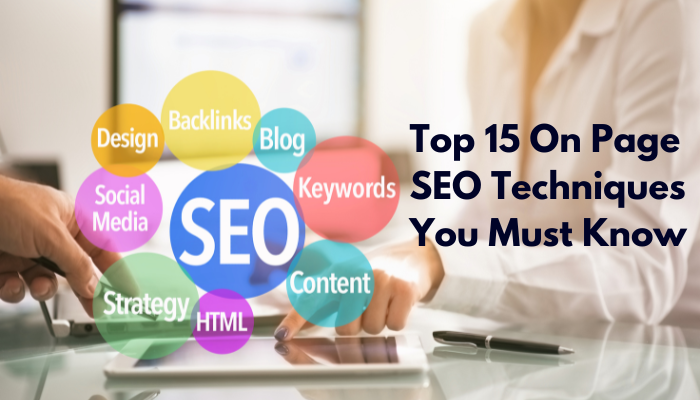Table of Contents
SEO can feel overwhelming sometimes, right? But here’s the good news: some of the most effective strategies are actually in your control. Yep, we’re talking about On Page SEO Techniques.
Unlike the mysterious world of backlinks and off-site strategies, on page SEO is like tuning your own guitar. You get to adjust every string—the title, the structure, the words you use—to make it all sound (and rank) beautifully.
In this post, I’m walking you through everything you need to know about on page SEO practices. We’ll go over what it is, why it matters, and the on page SEO tactics that actually move the needle. Whether you’re a newbie or brushing up, there’s something here for you.

What is On Page SEO?
Okay, so what is on page SEO exactly? It’s all about optimizing individual web pages to improve rankings and earn more relevant traffic. The goal? To apply smart On Page SEO techniques like meta descriptions, title tags, keyword placement, and content structure—basically, anything you can tweak on the page itself.
On Page SEO vs. Off Page SEO
Imagine your website is a pizza. On page SEO is everything about the pizza itself—the dough, the sauce, the toppings. Off page SEO is like the buzz around your pizza joint—reviews, mentions, backlinks.
- On page SEO: It’s the stuff you can directly control.
- Off page SEO: It’s what others do for (or to) your site, like backlinks and shares.
Both matter. But without a great pizza (your content), no one’s coming back for seconds.
Why It’s Crucial
Search engines are smart these days. Like, really smart. They look at your content’s depth, structure, speed, mobile-friendliness, and user signals. If your on page SEO techniques are solid, you’re making Google’s job easier—and that’s always a good thing.

Top 15 On Page SEO Techniques You Must Know
Here’s the juicy part—15 on page SEO strategies that I’ve seen work over and over again.
1. Optimize Title Tags
Your title is your first impression. Think of it like the headline of a magazine article—if it doesn’t catch attention, nobody’s reading.
- Keep it under 60 characters.
- Place your keyword early. Like “on page SEO techniques”—yep, just like that.
- Make it catchy. No one clicks boring titles.
Example: “15 On Page SEO Techniques That Actually Work (Tried & Tested)”
2. Write Compelling Meta Descriptions
Now, meta descriptions don’t directly impact rankings, but they do affect click-throughs. And more clicks = more love from Google.
- Use your primary and secondary keywords.
- Keep it under 160 characters.
- Make it sound like a quick benefit-driven pitch.
3. Use Header Tags (H1, H2, H3) Strategically
Headers are like road signs—they help both users and Google find their way.
- Use H1 for the page title (just one).
- Break sections with H2.
- Dive deeper with H3.
Your content will look cleaner, and your readers (and bots) will thank you.
4. Include Target Keywords Naturally
Here’s the thing: Google’s smarter than keyword stuffing. It knows when you’re forcing it.
- Stick to a keyword density of 0.8–1.2%.
- Sprinkle variations like “on page SEO tactics” or “on page SEO examples.”
- Write like a human (because, well, you are one).
5. Optimize URL Structure
Short. Sweet. Searchable.
- Use relevant keywords in your URL.
- Avoid ugly strings like
/blog?id=123. - Keep it clean and clickable.
Example: digitalleads.blog/on-page-seo-techniques
6. Internal Linking
Internal links are like a treasure map for your visitors—and for Google.
- Link to relevant pages naturally.
- Use descriptive anchor text (no “click here” nonsense).
- Spread that SEO juice around.
Here’s a good one: check out this blog on lead generation strategies—it’s a solid example of internal linking done right.
7. External Linking to Authority Sites
Linking to big, trusted sources helps build your page’s credibility.
- Cite studies, stats, or detailed guides.
- Open in a new tab so users stay on your site.
For instance, Moz has a great guide on on page SEO factors—worth a peek.
8. Image Optimization
Images are awesome, but they can also slow your site to a crawl.
- Compress them (try TinyPNG).
- Use descriptive file names like
on-page-seo-chart.jpg. - Always fill in alt text—Google can’t “see” images but can read alt text.
9. Mobile-Friendly Design
We’re in a mobile-first world. If your site doesn’t look good on phones… well, it’s kind of a problem.
- Use responsive design.
- Test on real devices—not just emulators.
- Watch font sizes and button spacing.
10. Improve Page Load Speed
I’ll be real—slow pages are the fastest way to lose visitors.
- Use Google PageSpeed Insights to diagnose issues.
- Minify your code.
- Upgrade your hosting if needed.
11. Schema Markup
This one sounds techy, but it’s powerful. Schema helps search engines better understand your content.
- Use it for reviews, FAQs, how-tos.
- It can get you featured snippets—aka SEO gold.
12. Use of LSI & Semantic Keywords
LSI = Latent Semantic Indexing. Fancy term for related words and phrases.
- Think beyond exact keywords.
- Use tools like LSIGraph to discover terms.
Writing about “on page SEO techniques”? Mention things like “meta tags,” “content structure,” and “search visibility.”
13. Content-Length Optimization
Bigger isn’t always better—but in SEO, longer content often wins.
- Aim for at least 1,500 words.
- Make it rich with insights, stats, and real help.
- Cut fluff. Keep the meat.
14. User Engagement Signals
Google pays attention to how people interact with your content.
- Are they staying? Clicking? Sharing?
- Use visuals, videos, bullet points.
- Ask questions. Add CTAs. Make it interactive.
15. Readability & Formatting
You know what sucks? Walls of text.
- Use short paragraphs (2–4 lines max).
- Use bold, italics, bullets—make it scannable.
- Write like you talk.
On Page SEO Tools You Can Use
Let’s be real, doing all this manually is kind of a lot. Good thing there are tools:
- Yoast SEO (for WordPress folks)
- Rank Math (more advanced features)
- Surfer SEO (for content optimization)
- Google Search Console (your SEO dashboard from Google itself)
These help you keep your on page SEO activities sharp and consistent.
Common On Page SEO Mistakes to Avoid
Even pros mess up sometimes. Here’s what to avoid:
- Keyword stuffing: Looks spammy, feels spammy.
- Broken links: Kills user experience.
- Duplicate content: Confuses Google (and readers).
- Ignoring mobile: You’re basically cutting out half your audience.
Avoid these, and you’re already ahead of most.
How to Audit Your On Page SEO
Auditing sounds technical, but it’s more like a health check-up for your On Page SEO techniques—making sure everything’s working just right.
Here’s a basic process:
- Crawl your site with tools like Screaming Frog or Ahrefs.
- Check titles, metas, headers.
- Spot broken links, missing alt text.
- Analyze content: Are keywords used well? Is it too thin?
- Mobile check and page speed check.
- Use Google Search Console to find deeper issues.
Make this a habit every few months. Your site will thank you.
Conclusion
Phew! That was a lot, huh? But hopefully, you now see that on page SEO techniques aren’t rocket science. They’re just smart, intentional choices that improve your content and user experience.
From crafting magnetic titles to optimizing your images and speeding up your site, every tweak adds up. Trust me, I’ve seen small changes make a huge difference.
So, go ahead—start applying these on page SEO strategies, monitor your results, and keep tweaking. SEO is a marathon, not a sprint, but the sooner you start, the sooner you win.
And hey, if you’re curious to dig deeper, swing by the Digital Leads Blog. There’s always more to explore.
FAQ: On Page SEO Techniques
Q1: What is the most important on page SEO technique?
A: Optimizing your title tag and using your focus keyword early in the content is often considered the most impactful on page SEO tactic.
Q2: How many keywords should I use in on page SEO?
A: Aim for 1–2 primary keywords and 3–5 secondary/LSI keywords depending on content length.
Q3: Does internal linking improve on page SEO?
A: Yes! Internal links help search engines crawl your site and boost the SEO of related pages.
Q4: Are meta descriptions a ranking factor?
A: Not directly, but well-written meta descriptions can improve CTR, which influences rankings indirectly.
Q5: How often should I audit my on page SEO?
A: At least every 3–6 months or after major content updates or algorithm changes.










